
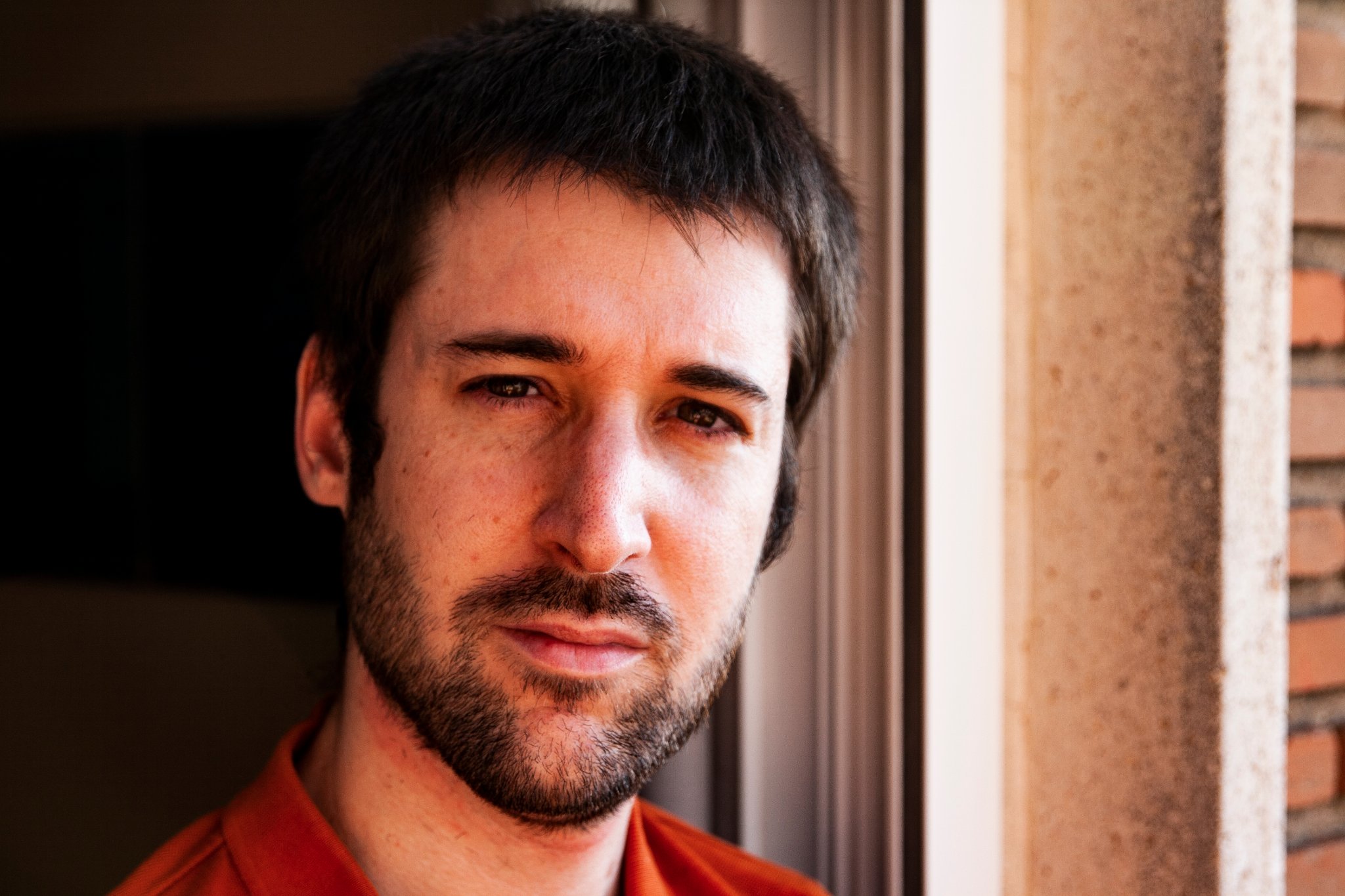
Joan Gómez Alemany
TV(TeleVision) TN(TransNacional) TNT(TurnerNetworkTelevision) (TriNitroToulene)
Duration: 8'
Instrumentation details:
alto saxophone in Eb
1st percussion
2nd percussion
3rd percussion
electric guitar
violin
violoncello
TV(TeleVision) TN(TransNacional) TNT(TurnerNetworkTelevision) (TriNitroToulene)
Translation, reprints and more
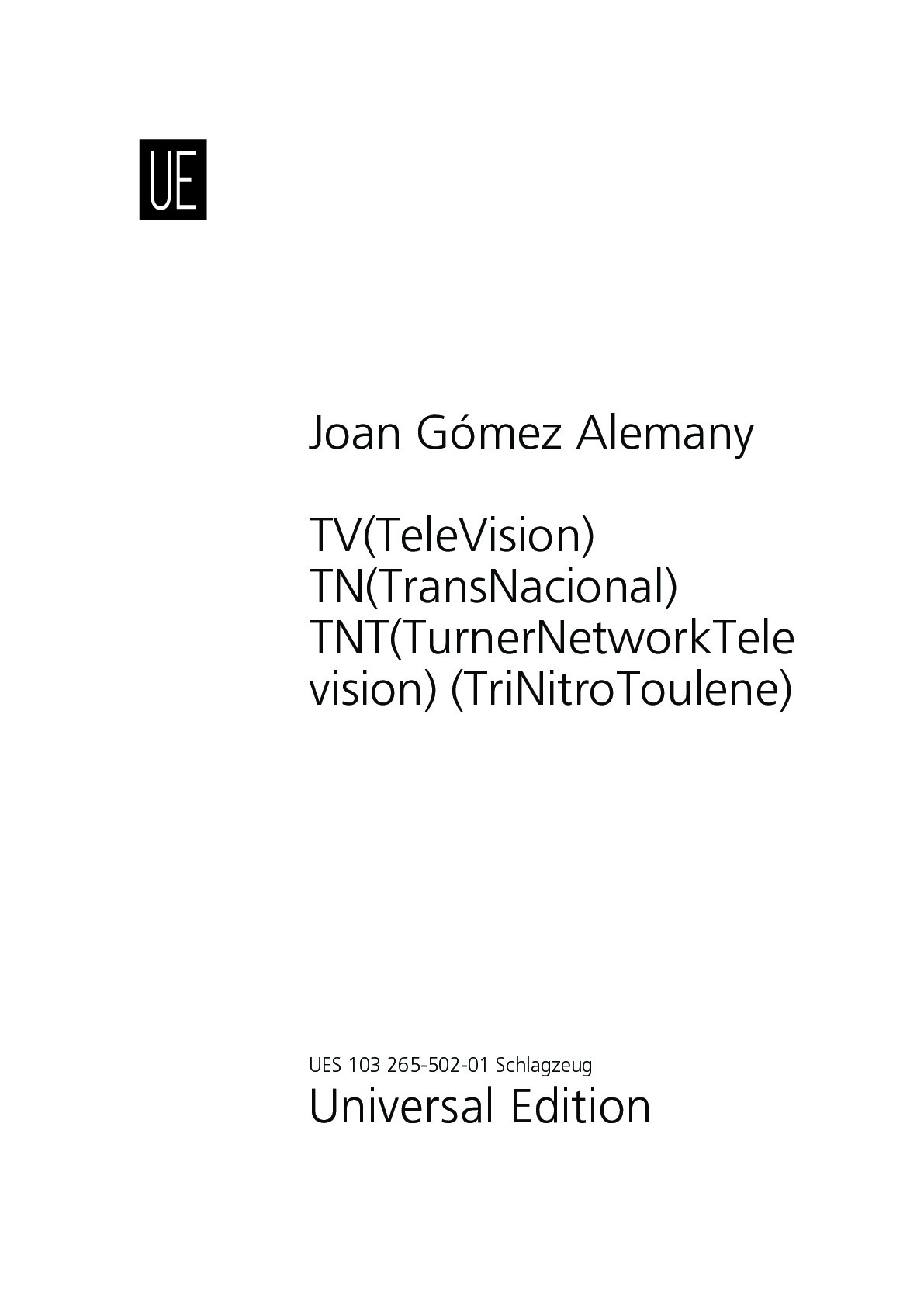
Joan Gómez Alemany
1. Schlagzeug (TV(TeleVision) TN(TransNacional) TNT(TurnerNetworkTelevision) (TriNitroToulene) )Type: Stimme
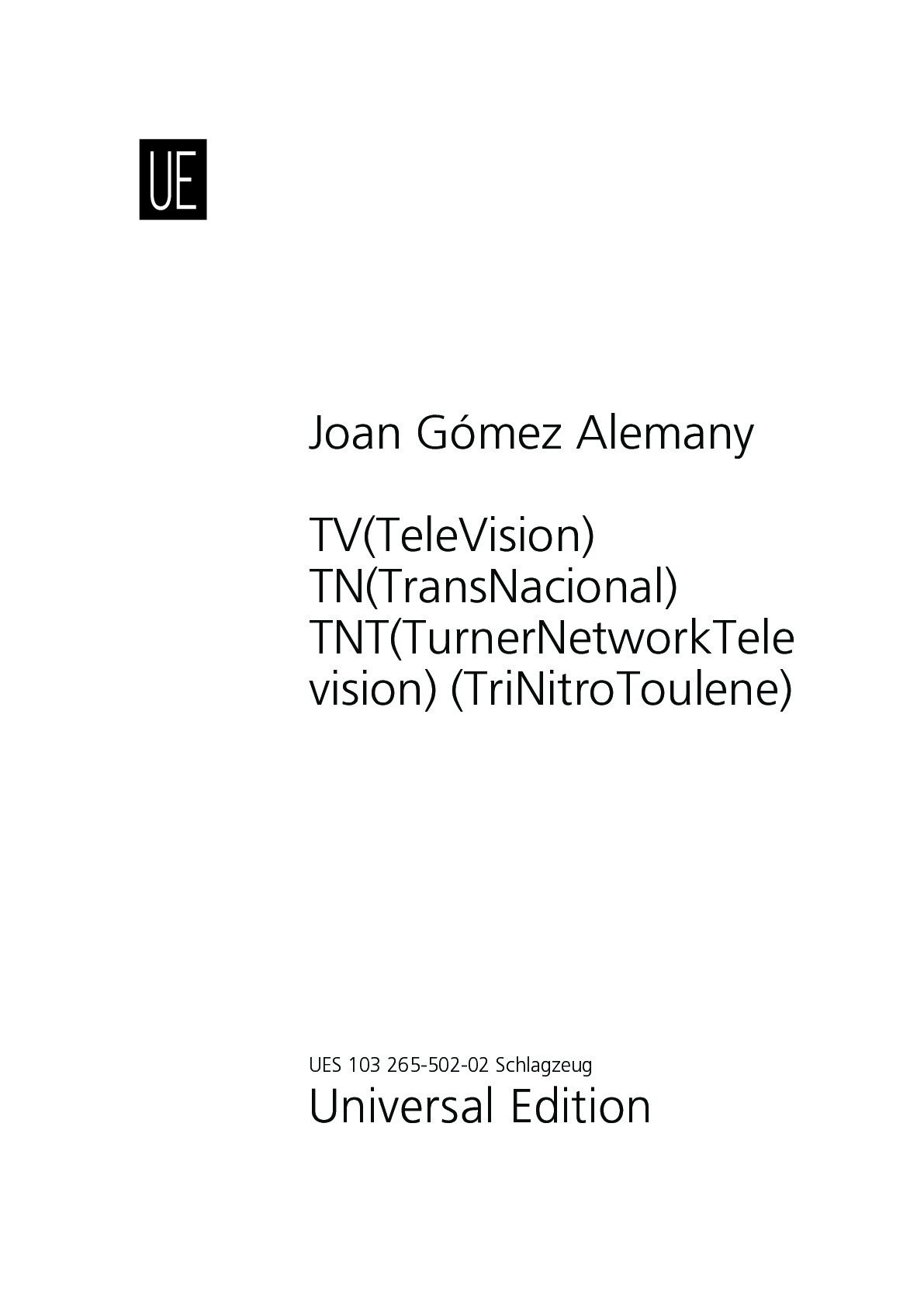
Joan Gómez Alemany
2. Schlagzeug (TV(TeleVision) TN(TransNacional) TNT(TurnerNetworkTelevision) (TriNitroToulene) )Type: Stimme
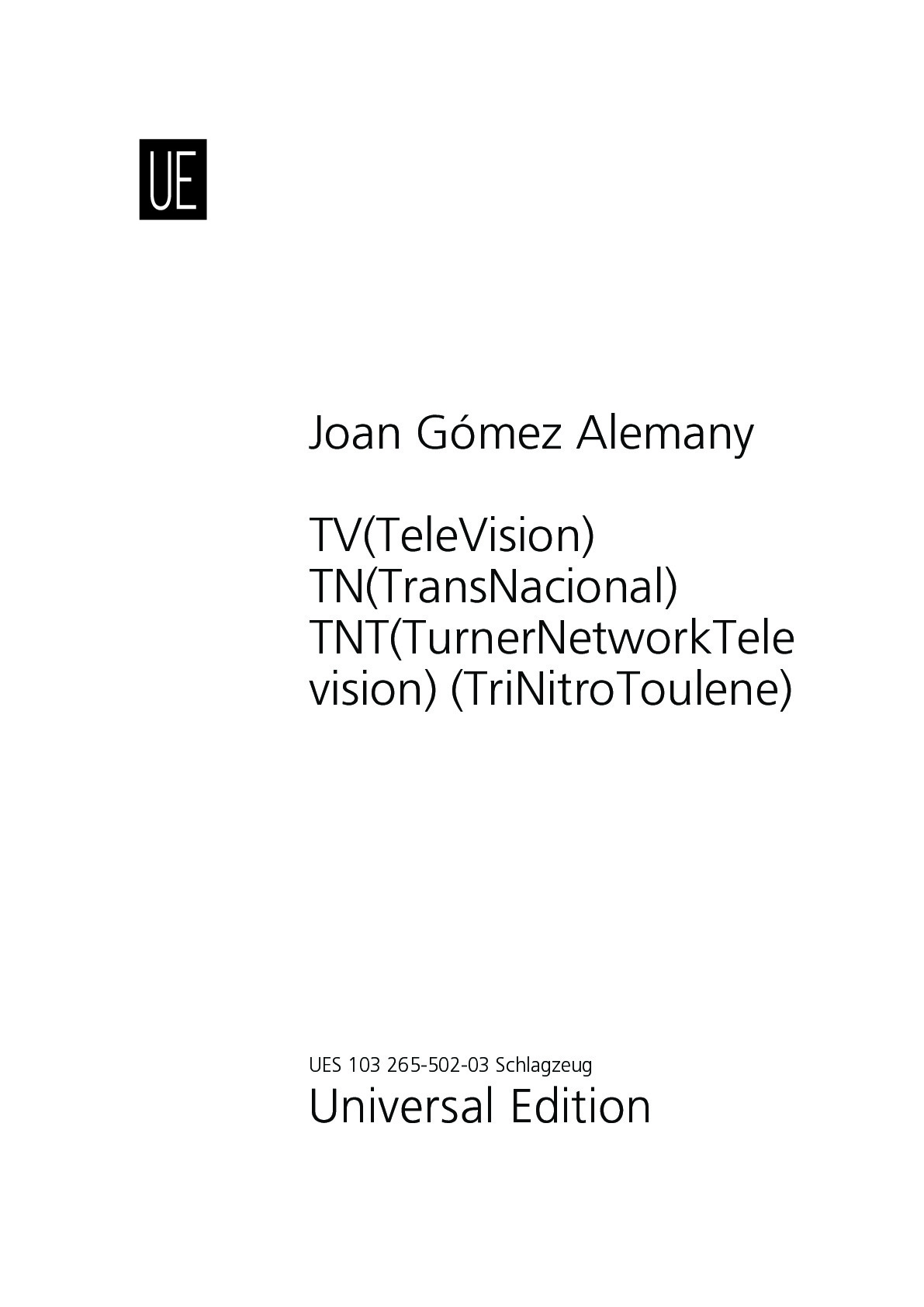
Joan Gómez Alemany
3. Schlagzeug (TV(TeleVision) TN(TransNacional) TNT(TurnerNetworkTelevision) (TriNitroToulene) )Type: Stimme
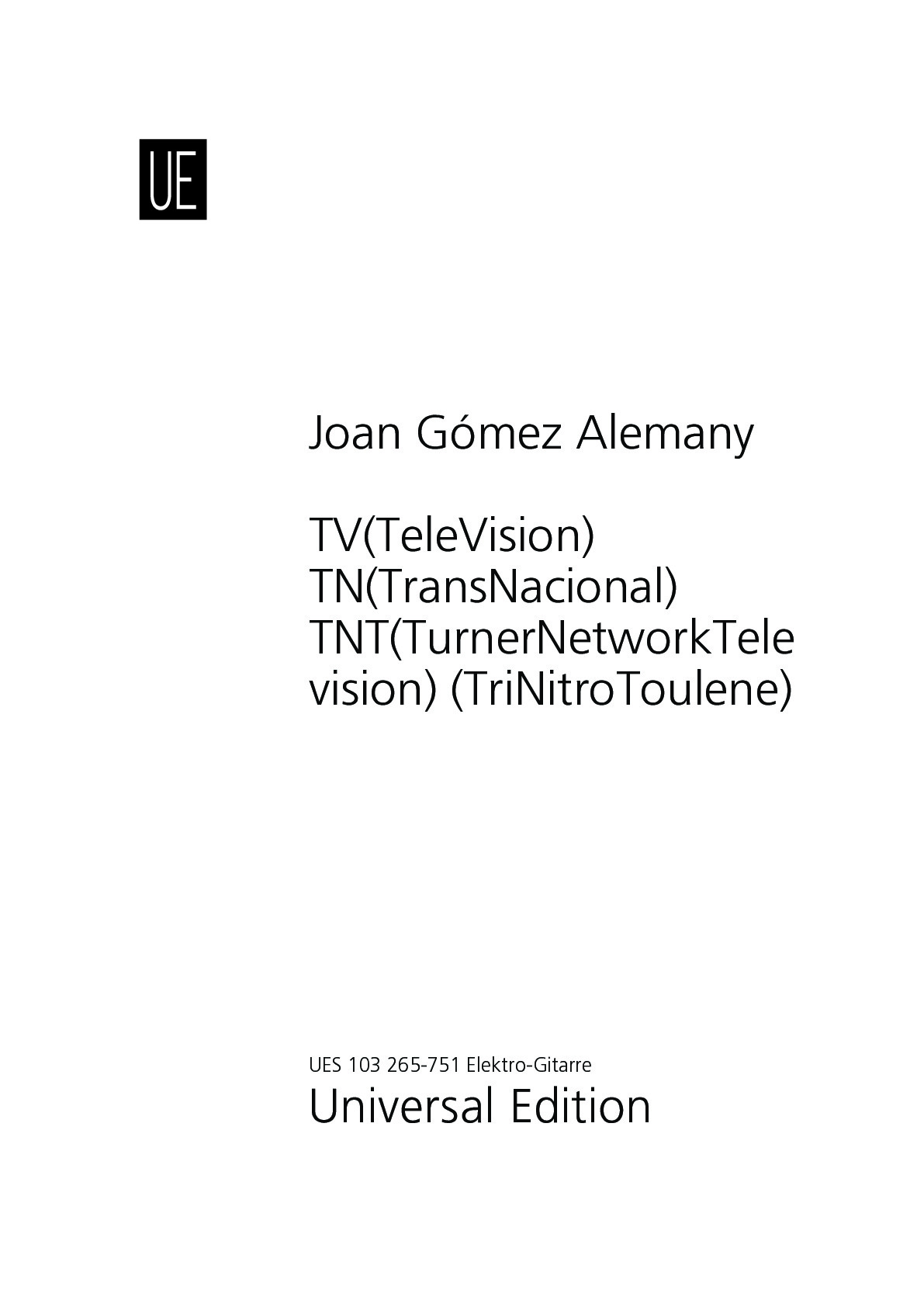
Joan Gómez Alemany
Elektro-Gitarre (TV(TeleVision) TN(TransNacional) TNT(TurnerNetworkTelevision) (TriNitroToulene) )Type: Stimme
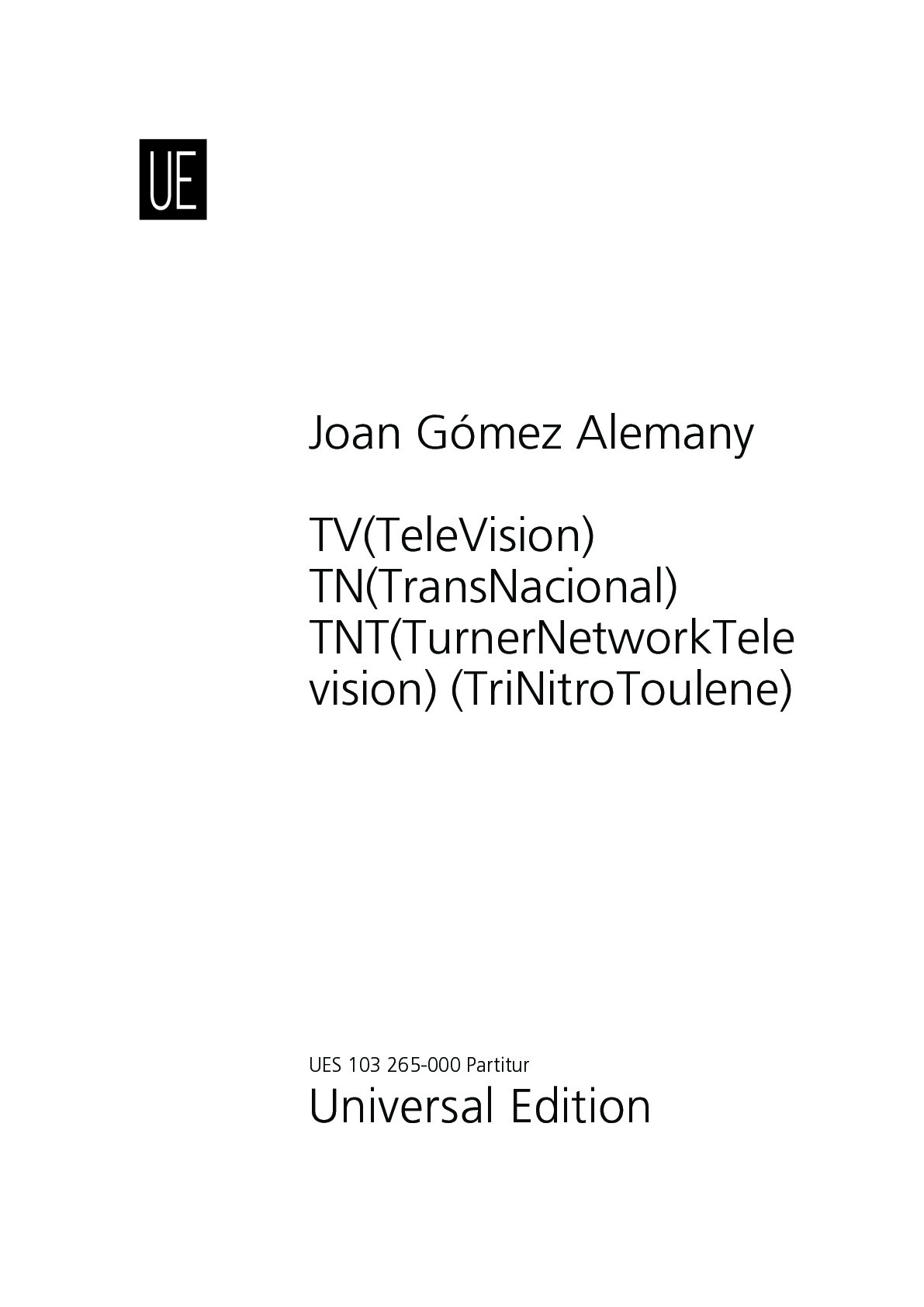
Joan Gómez Alemany
TV(TeleVision) TN(TransNacional) TNT(TurnerNetworkTelevision) (TriNitroToulene)Type: Dirigierpartitur
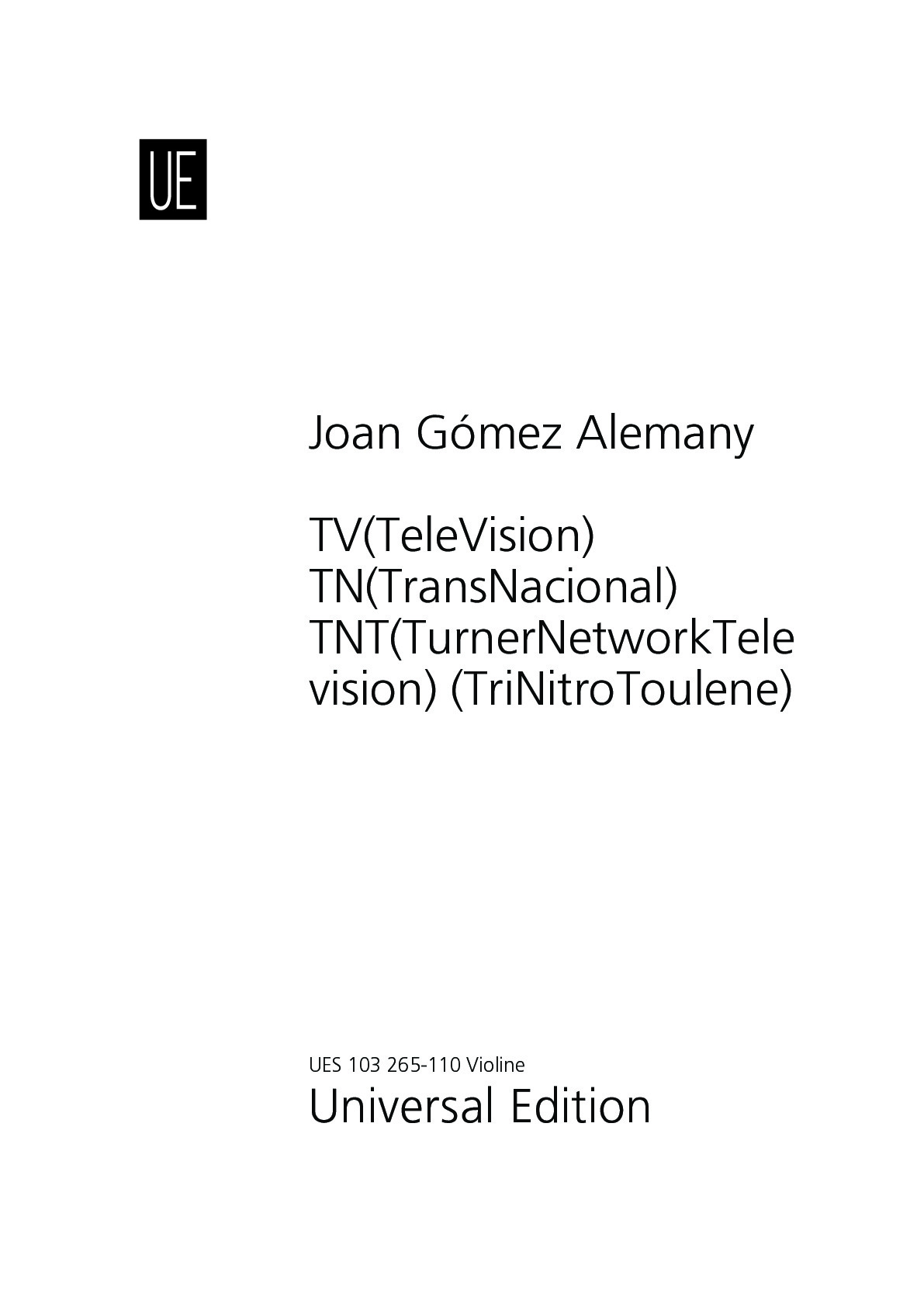
Joan Gómez Alemany
Violine (TV(TeleVision) TN(TransNacional) TNT(TurnerNetworkTelevision) (TriNitroToulene) )Type: Stimme
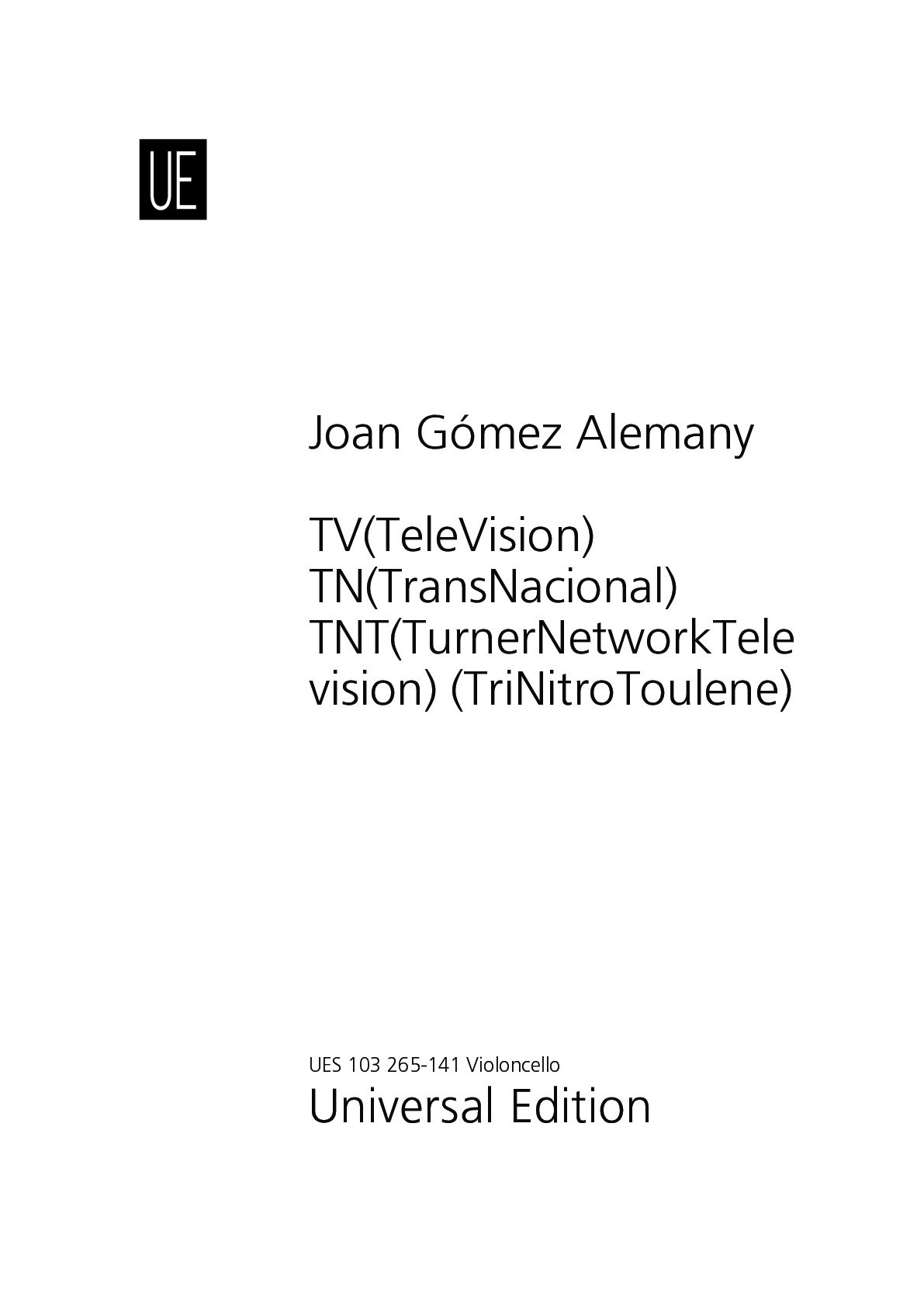
Joan Gómez Alemany
Violoncello (TV(TeleVision) TN(TransNacional) TNT(TurnerNetworkTelevision) (TriNitroToulene) )Type: Stimme
Sample pages
Video
Work introduction
TV (TeleVision) = TN (TransNacional) = TNT (TurnerNetworkTelevision) (TriNitroToulene) was commissioned by Institut Valencià de Cultura for the Festival Ensems 41 with collaboration of Festival Mixtur and premiered by Container Ensemble.
EXPLANATION OF THE PIECE: One of his most openly critical pieces with the means of (in)communication and their processes of do - mination on a global scale through TV (alienating weapon par excellence) is TV (TeleVision) = TN (TransNacional) = TNT (TurnerNetworkTelevision) (TriNitroToulene) (2019), a score for an amplified instrumental septet of alto saxophone with spring-drum, electric guitar, violin, cello and three percussionists, with electronics and video accompaniment.
This piece was commissioned by the Institut Valencià de Cultura for the Ensems Festival in collaboration with the Mixtur Festival and it is a proposal of great force and relevance that connects with critical devices of other composers like Fausto Romitelli or Stefan Prins, for whom TV has come to 21st century forefront, using their own sounds and clichés within the musical composition that makes it become a process of awareness and an opening to the sound environment of the mass media that Joan Gómez shares with illustrious composers such as John Cage and Helmut Lachenmann (they, through the radio, a forerunner of TV in regard to broadcasting worldwide alienating discourses).
We get into the polluting world of commercial TV that we can describe as circular and, therefore, self-recurring and obsessive; the first sounds we hear on TV (TeleVision) = TN (TransNacional) = TNT (TurnerNetworkTelevision) (TriNitroToulene) mimic those of the very television set without a broadcast signal: its purest and most primitive white noise, through the combination of the sixth electric guitar’s string activated by the input jack, producing different degrees and harmonics of granular noise: sonority to which we will return at the end of the work, once built by the whole septet. The origin of this noise, as well as of the global nature of the composition, goes back —in Gómez Alemany’s words— to the fact that “one day, realising that the TV signal was interfered, I decided to record the distortions caused by this interference (not caused by me, but by the own TV set and its defects: a metaphor by itself for the trash that TV broadcasts). I just recorded it and then edited it. For this reason, I conceive of this material, in a certain way, as a ready-made (after Marcel Duchamp), which I face from a detached position. I made a zapping recording from various channels for about four hours and with this, I got the average of what was broadcast in order to reflect the usual TV programming.”
These materials compose one of the most significant layers of the score, which is launched by electronics through loudspeakers plus two visual projections of television programs and commercials that create, like an installation, TV (TeleVision) = TN (TransNacional) = TNT (TurnerNetworkTelevision) (TriNitroToulene). Such a plethora of images and sounds is the base-idea of the whole work, which, in Joan Gómez’s opinion, is “the deconstruction of the TV material (trash) and the culture it promotes (a mass culture with very low-trash standards).” Thus, the video specifies the contents that emerged on these television channels, in a sequence that includes pixelation, abstraction, unreality and different forms of plasticity, mixed-up with cartoons and advertising as a way of turning the human being into a commercial product and imposing imaginaries, news filled with war and refugee images, commercial series, cultural agendas transformed into industrial content advertising, low-class Hollywood cinema that trivialises violence, making from all of this a spectacle and a whole grotesque litany that turns people into things, etc. All these elements of trivialization, control and oppression are elucidated in the score title, linked to the hegemonic power of the United States and its use of television as a worldwide means of dominance in which television networks become multinational corporations.
Acoustically, there are three large layers building the score. In the first layer, the sounds come from television itself and its music, as well as “musical quotes from the repertoire used by auditoriums and from commercial music as a reflection of the cultural agenda”. The second layer, an instrumental one, introduces sounds that the septet imitates from the images on the screen, even with their own objects, as for example hair clippers like those on TV commercials or wallets with coins, hidden among the percussionists, that turn money into a musical material which reveals what underlies as a form of commerce under the tinsel of plasterboard television. The third layer has a more abstract character, although as a musical metaphor it is very direct and explicit: the ensemble becomes, like commercial television, an obsolete and rusty industrial mechanism, whose appearances on stage are full of distortions, in an instrumental framework of saturated nature that seems like a whole manufacturing installation full of frictions and worn-out machinery: the very image of today’s television and its degenerative circles. Comprising the robotic, the toxic and the manipulative, the ensemble clarifies the composer’s critical discourse, vindicating Guy Debord’s situationist thinking and his denunciation of the “society of the spectacle”, by evidencing the most sordid face of a mean of (in)communication that filters, among the motley instrumental mass, speeches coming from television recordings whose American-accented English shows the origin of this plague of stupidity planned on a planetary scale.
The great balance among the three layers of the score in the Ensemble Container version helps to clarify the development of TV (TeleVision) = TN (TransNacional) = TNT (TurnerNetworkTelevision) (TriNitroToulene), not only the neat textural framework of the instrumental part (among whose extended techniques are many of those already seen in the six preceding scores), but to make the message understandable and to have an effect on listeners’ awareness. In the face of the monolithism that reifies human beings, standardising cultures and ways of thinking, Joan Gómez Alemany invites us to an agora that updates those in which European philosophy and arts settled their roots in the ancient world. It is for this reason that our journey through these seven works gives food for thought, encourages criticism and gives rise to social awareness through music as a way of art and beauty, rooted in time and stretched into the future, building that concept as necessary as, perhaps, somewhat forgotten today, which is that of utopia.
Paco Yáñez
From the libretto of the CD 7 works for chamber music and ensemble edited by Liquen Records
